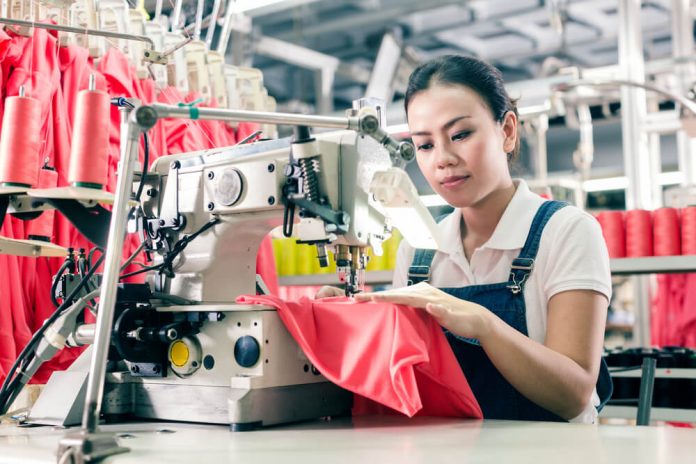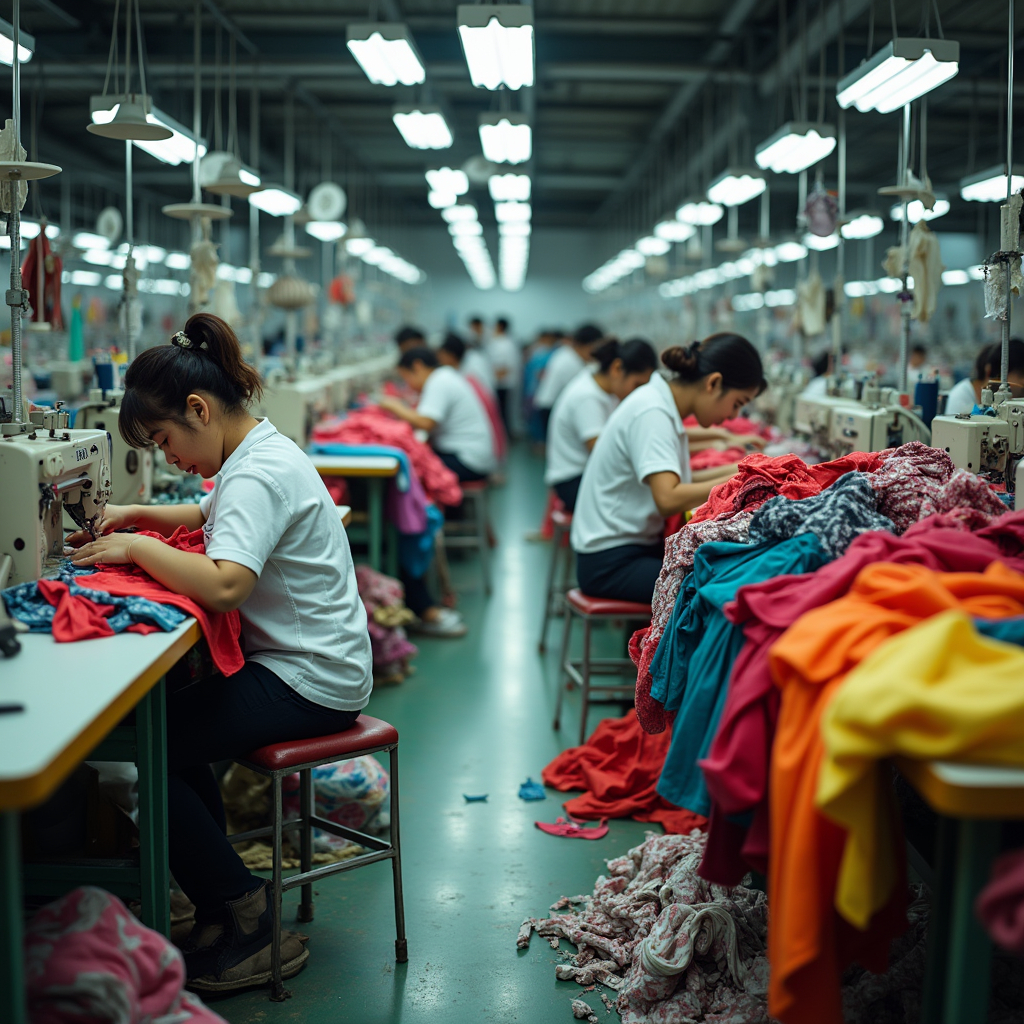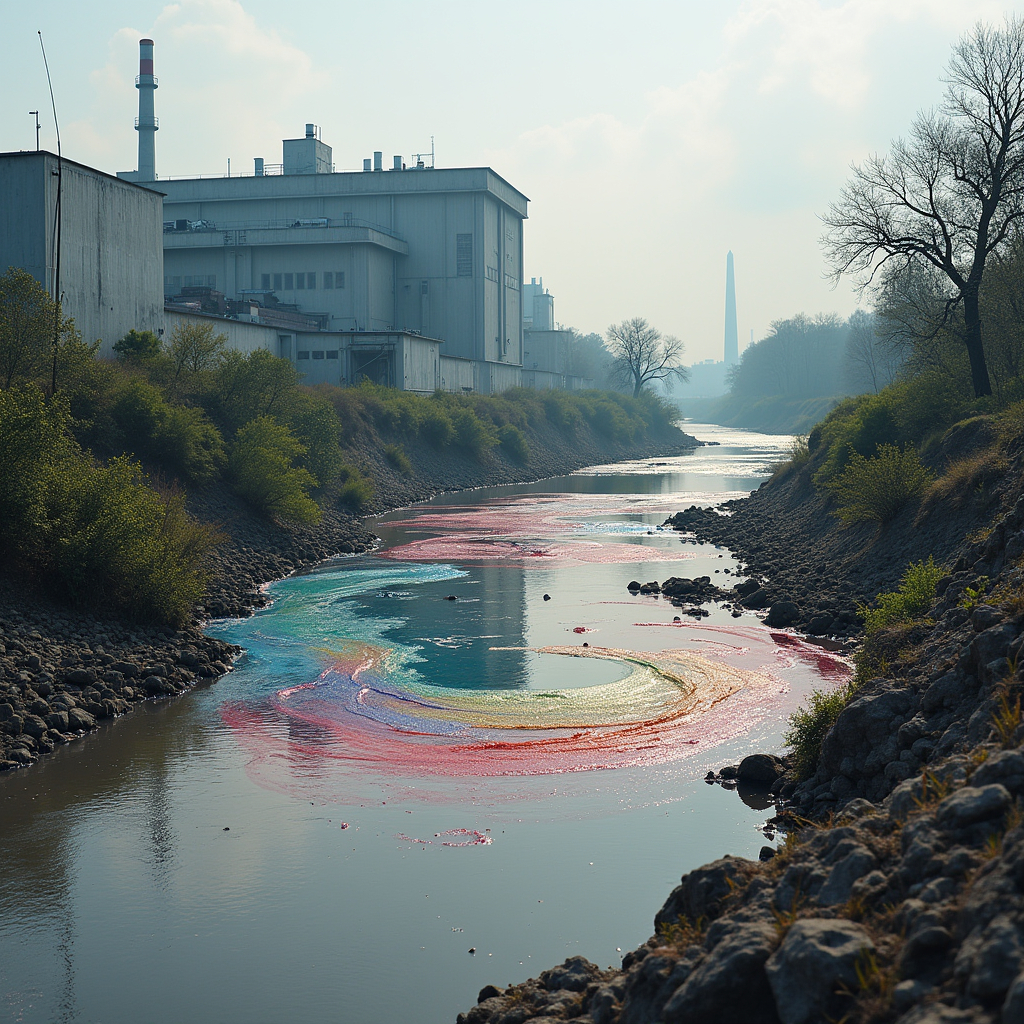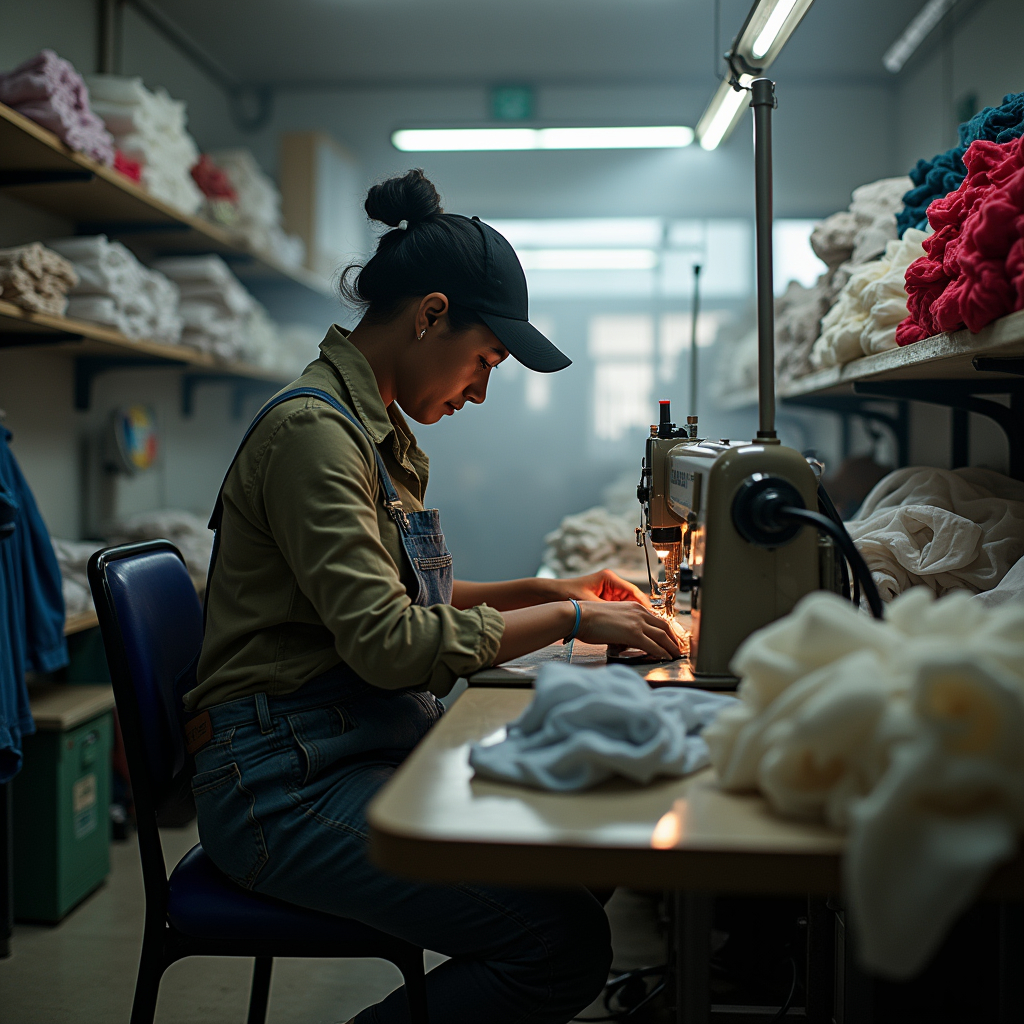
This article has been written by Gayatri Sharda pursuing a Diploma in M&A, Institutional Finance and Investment Laws (PE and VC transactions) from LawSikho.
This article has been edited and published by Shashwat Kaushik.
Table of Contents
Introduction
Fashion is a very wide term that covers a huge industry. The fashion industry includes various other industries like shoes, clothes, makeup jewellery, etc. Because of this, the fashion industry is associated with other areas of the industry like retailers, manufacturers, designers, and photographers. This industry is mainly dominated by influential people like celebrities and millionaires, making it out of reach for a common person. The glamorous world of the fashion industry attracts the general public, leading to the fast fashion industry’s emergence.
The fast fashion industry offers a huge market for people to sell low priced copies of designer brands to people who cannot afford them. Normally in the fashion industry, before a clothing design is introduced in the market, many steps are taken by these fashion houses to protect themselves, like branding, marketing, franchising, etc. But the fast fashion industry skips all of these steps to rapidly produce designs according to the new trends in the market. This business model of the fast fashion industry makes it a very challenging industry filled with legal difficulties.
What is fast fashion
Fast fashion means the rapid production of low-quality clothes using cheap materials that are sold at low prices to keep up with the changing fashion trends. The clothes produced are usually low quality because of cheap materials so they wear off easily, making them disposable. The industry’s main tactic to attract a huge market is by selling copies of designer brands at low prices. The low prices make these clothes accessible for common people, leading to overconsumption and unsustainable practices.
Fast fashion is the fast production of rapidly changing trends in clothing that consumers want to be delivered fast. These clothes are quick to deteriorate, making them easily disposable, leading to more demand in the market. Fast fashion, as the name suggests, is very fast, thus making fast production an integral part of this industry. They use cheap materials like synthetics to cut production costs. Fast fashion brands like H&M, Shein, Zara, Urbanic, and Forever 21 are a few of the fast fashion brands easily available in India.
Fast fashion in India
The Indian fashion industry is a vibrant and rapidly growing sector. In recent years, the rise of fast fashion has had a significant impact on the Indian fashion landscape. Fast fashion refers to the mass production of low-cost clothing items that are designed to appeal to the latest trends. This has led to a number of changes in the way that Indians consume fashion.
One of the most significant impacts of fast fashion has been the increased availability of affordable clothing. In the past, high-quality clothing was often only available to the wealthy. However, the rise of fast fashion has made it possible for people of all income levels to purchase stylish clothes. This has had a democratising effect on fashion, making it more accessible to everyone.
Another impact of fast fashion has been the increased pace of fashion trends. In the past, fashion trends would change gradually over the course of several seasons. However, the rise of fast fashion has led to a much more rapid turnover of trends. This is because fast fashion retailers are constantly releasing new collections in order to keep up with the latest trends. This has led to a more disposable approach to fashion, with consumers often buying clothes that they only intend to wear for a short period of time.
The rise of fast fashion has also had a significant impact on the environment. The production of fast fashion clothing often involves the use of harmful chemicals and dyes. Additionally, the large volume of clothing produced by fast fashion retailers often ends up in landfills, where it can take hundreds of years to decompose. This has led to growing concerns about the environmental impact of fast fashion.

In recent years, there has been a growing backlash against fast fashion. Consumers are becoming increasingly aware of the environmental and social costs of fast fashion, and many are choosing to shop more sustainably. This has led to the emergence of a number of ethical fashion brands that are committed to producing clothing in a more sustainable way.
The future of fast fashion in India is uncertain. However, it is clear that the industry is facing a number of challenges. The rise of ethical fashion, the growing awareness of the environmental impact of fast fashion, and the increasing cost of production are all factors that are likely to have a significant impact on the future of fast fashion in India.
The fast fashion brands sell products that are copies of popular brands. The designer copies of famous brands at low prices attract consumers, leading to a huge market for fast fashion. Due to this huge market, there has been a rise in unlawful and unethical practices in the industry. The instances of counterfeiting, fraud, and unethical labour practices have become very common in fast fashion. The cycle of production to sale of fast fashion has resulted in numerous legal challenges in India.
Legal challenges in the fast fashion industry
Fast fashion is an industry that is evolving very rapidly. It involves various fields like photography, designing, etc., and it also affects consumers. The very basis of fast fashion is the fact that it copies designs of international brands and sells them at low prices. To fulfil the demands of consumers, production is rapid, bypassing various steps that are normally taken.
Following are some of the legal challenges faced in the fast fashion industry:
Counterfeiting and IPR laws
The most widespread legal challenge in fast fashion is counterfeiting. It is the selling of replicas or copies of designer products. Fast fashion is not based on originality but instead is based on selling copies of designer brands at affordable prices. India, being a populous country, is a huge market for counterfeit products. There are anti-counterfeiting laws in India to regulate the sale of these products and provide civil and criminal relief to the customers.
Intellectual Property Rights (IPR) or Intellectual Property Laws are sets of laws that aim to protect the creation or invention of individuals in the fields of arts, literature, fashion, technology, science, etc. It protects original artistic creations and innovations of individuals. These laws include the Patent Act, Copyright Act, Trademark Act, Design Act, and even the Information Technology Act.
These laws provide relief like injunctions, damages, and, in extreme situations, payment of fines or imprisonment. However, counterfeit products continue to sell because they are in demand in the market and they are sold at a very low price. The recent statistics show that the Indian markets consist of 25-30% of counterfeit products. Keeping a check on the sale of these products has become difficult in India.
Small fashion brands often lack the funds and resources to protect their products legally and become victims of counterfeiting. Thus, counterfeiting is one of the most crucial and difficult legal challenges in the fast fashion industry, as it is easily available because of its demand and there are no strict standards to keep the market in check.
Fraud and cybersecurity
Most of the fast fashion brands normally do not have storefronts. Their products are sold online on various non-verified websites. These websites do not have any clear consumer policies. This not only leads to doubt in the brand integrity, but it also exposes the consumer to various online risks like data breaches, spam calls, frauds, credit card information theft, online payment fraud, and other cyber security threats.
As per the Information Technology Act of 2000, any publication for fraudulent purposes, misrepresentation, or breach of privacy and confidentiality is an offence if done using the internet, i.e., online. This act also protects individuals against online fraud, data theft, credit card information theft, and other cyber security breaches.
Fast fashion websites normally do not provide any important information, like information related to their supply chain. It is difficult to detect source theft as online data footprints are hard to trace. On many websites, no return information is given, making it difficult for consumers to initiate the return of any defective items.
These are a few of the challenges from many that highlight the need for strong cyber security measures and strict verification procedures to protect consumer data on the internet.

Minimum wages and working conditions of labourers
Fast fashion brands are commonly known for their exploitation of workers. They hire cheap labour in developing countries. These labourers are often underpaid and are made to work for long hours. They work in an unethical environment lacking basic safety measures and are exposed to dangerous chemicals without any protective equipment. This leads to a serious risk to the lives of the workers and it endangers their health.
Fast fashion outsources vendors to mass produce the clothes. These vendors are often unregistered, so as a result they are not required to comply with any laws. This makes child labour very common in this industry. The majority of the workers making clothes are women. They face mistreatment and are often verbally and sexually abused while working in these factories. They are also underpaid and are made to work for 14-16 hours a day without any rest.
In India, the working conditions of workers, their working hours, health provision, and leave entitlements are regulated by the Factories Act 1948. The conditions for adolescents to work in factories are also regulated by this act. The Minimum Wages Act 1948 regulates the minimum wages to be given to workers. But regardless of these regulations, forced and underpaid labour and unsafe working environments are prevalent and unchecked.
The inhumane working conditions of workers are the reason for frequent work related accidents. These workers are not even given any fair compensation or essential first aid. This is serious human rights violations, which pose a huge challenge in this industry.
Environmental impact
Fast fashion is commonly known to rely on low-quality materials like synthetic fabrics to manufacture clothes. This makes this industry unsustainable as the clothes easily tear or wear out after only a few uses. Fast fashion is not meant to last. Due to wear and tear, people buy clothes frequently, which leads to overconsumption. Fast fashion is very wasteful and therefore it is polluting the environment.
Cheap-quality clothes that are mass-produced generally involve the use of synthetic materials. On washing, these clothes shed microplastics, which pollute the environment. Synthetic materials like nylon, spandex, or polyester are the biggest contributors to microplastic pollution. This type of pollution is hazardous to humans, plants, and animals alike.
Low-quality clothes usually end up in wastelands or landfills because they are easily and frequently disposed of. Often times, these garments are non-recyclable. Thus, to dispose of them, they are burnt, resulting in the release of harmful gases. The greenhouse gases released during the production of these clothes are considerably higher than what is released in the shipping and aviation industries combined.
According to the UN, the fashion industry ranks as the second largest industry to consume water globally. Time and again, these fast fashion factories dump their chemical waste in water bodies, contaminating them. The fashion industry is responsible for almost 20% of pollution of clean water because of the constant use of chemical dyes that are used in the production process of clothes and the chemical waste that is released back into the water. Thus, fast fashion impacts the environment adversely. Unknowingly, it affects the health of the people because of microplastics and harmful gases released. People should switch to a sustainable lifestyle involving sustainable fashion to help protect the environment.
Case study on legal challenges
A few of the real-life incidents related to the legal issues arising out of the fast fashion industry are:
- In 2013, as a result of the collapse of a garment factory in Bangladesh, nearly 1000 workers working there died. The main reason for this unfortunate incident is the dangerous working conditions of these unregistered factories. Despite this incident, the working conditions of workers are still ignored in the industry.
- Shein is one of the most controversial fast fashion brands. It is famous for selling low quality clothes that are dupes of designer brands and underpaying its workers. In a report of a Swiss NGO, it was revealed that the workers of Shein factories normally worked 75 hours per week. Shein is also said to be involved in the forced labour of workers in China. Greenpeace in Germany also conducted tests on shein clothing. It was observed that many dangerous chemicals that are found in the Shein clothes break many European regulatory limits.
- The multiple disputes surrounding the brand are Shein related to its involvement in copyright infringement, which raises significant concerns in the fashion industry. Shein’s fast production cycle leads to designs that closely resemble or are often outright copies of designs from established brands and independent designers. Many small business owners and small-scale designers have raised concerns about Shein copying their product designs and selling them at a very low price.
- The majority of the fast fashion brands claim that they are paying minimum living wages to their workers. But they only pay the required legal minimum wage, which has not changed with the changing economy. Now, due to inflation and the rising cost of living, minimum wages are not enough to support a person, let alone a family. This was clearly seen in the worker’s protests in Dhaka, Bangladesh for fair wage rates. This happened in November 2023 and many protestors were injured.

Difference between fast and slow fashion
Fast Fashion
Fast fashion is a term used to describe the rapid production of clothing at a low cost. Fast fashion brands typically release new collections every few weeks, and their clothes are often made from cheap materials that are not meant to last. This type of fashion is often associated with overproduction, waste, and environmental pollution.
Slow fashion
Slow fashion, on the other hand, is a more sustainable approach to fashion. Slow fashion brands focus on creating high-quality, timeless pieces that are made from sustainable materials. They also produce their clothes in smaller quantities, and they often work with local artisans and manufacturers.
Key differences between fast and slow fashion
- Production: Fast fashion brands produce clothing quickly and cheaply, often using unethical labour practices. Slow fashion brands, on the other hand, focus on producing high-quality clothing that is made ethically and sustainably.
- Materials: Fast fashion brands often use cheap, synthetic materials that are not meant to last. Slow fashion brands, on the other hand, use high-quality, natural materials that are durable and long-lasting.
- Design: Fast fashion brands often copy designs from high-end fashion brands. Slow fashion brands, on the other hand, create their own unique designs that are inspired by nature, art, and culture.
- Price: Fast fashion clothing is often very affordable. Slow fashion clothing, on the other hand, is typically more expensive. This is because slow fashion brands pay their workers fair wages and use high-quality materials.
Environmental impact
Fast fashion has a significant environmental impact. The production of fast fashion clothing requires a lot of energy and water, and it also generates a lot of waste. Slow fashion, on the other hand, is a more sustainable alternative. Slow fashion brands use less energy and water, and they also generate less waste.
Social impact
Fast fashion is often associated with unethical labour practices. Fast fashion brands often outsource their production to developing countries, where workers are paid very low wages and work in dangerous conditions. Slow fashion brands, on the other hand, are more likely to produce their clothing in developed countries, where workers are paid fair wages and work in safe conditions.
Which type of fashion is right for you
The type of fashion that is right for you depends on your personal values and preferences. If you are looking for affordable clothing that you can wear for a short period of time, then fast fashion may be a good option for you. However, if you are looking for high-quality, sustainable clothing that you can wear for many years, then slow fashion is a better choice.
Advantages and disadvantages of fast fashion
Advantages of fast fashion industry
- Affordability: Fast fashion brands produce clothes at low costs, making them accessible to a wider range of consumers. This allows people to buy more clothes for less money, which can be especially beneficial for those on a budget.
- Variety: Fast fashion brands constantly introduce new designs and trends, allowing consumers to keep their wardrobes fresh and up-to-date. This rapid turnover of styles means that there is always something new and exciting to choose from.
- Convenience: Fast fashion brands often have large stores or online platforms, making it easy for consumers to find what they are looking for. They also frequently offer fast shipping and easy returns, providing a convenient shopping experience.
- Trendy: Fast fashion brands are quick to respond to the latest trends, allowing consumers to stay at the forefront of fashion. This can be important for people who want to maintain a stylish and contemporary appearance.
Disadvantages of fast fashion industry

- Quality: Fast fashion clothes are often made from cheap materials and poorly constructed, resulting in poor durability and longevity. This can lead to clothes that quickly wear out or fall apart, requiring consumers to replace them more frequently.
- Environmental Impact: The fast fashion industry is known for its negative environmental impact. The production of fast fashion clothes consumes large amounts of water, energy, and resources and generates significant amounts of waste. Additionally, the use of synthetic materials and chemicals in fast fashion clothing can contribute to pollution and harm ecosystems.
- Labour exploitation: Many fast fashion brands rely on low-wage labour in developing countries, where workers often work in unsafe and exploitative conditions. These workers may be subjected to long hours, low pay, and hazardous working environments, contributing to social injustice and inequality.
- Overconsumption: The fast fashion industry encourages overconsumption by promoting the idea that clothes are disposable and easily replaceable. This can lead to excessive shopping and waste, as consumers constantly seek the latest trends and discard their old clothes.
Conclusion
The fast fashion industry is notorious for its fast production process to keep up with changing fashion trends and market demand. The clothes produced are often of low quality because the main focus of the industry is speed and cost efficiency, not durability and sustainability. Due to this, the industry faces various legal problems like counterfeiting, online frauds, labour malpractice, etc. Workers in this industry often work in unethical and unsafe working environments with inadequate wages. Physical abuse and forced labour are also common in fast fashion factories. Low cost materials and quick production processes lead to environmental pollution. Thus, fast fashion is riddled with legal problems and these problems should be addressed for a sustainable and humane industry.
References
- https://www.oxfam.org.uk/media/press-releases/fast-fashion-produces-more-carbon-emissions-per-minute-than-driving-a-car-around-the-world-six-times-oxfam/?pscid=ps_ggl_gr_Google+Grants+-+Press+Releases+(DSA)_Press+Releases+(DSA)&gad_source=1&gclid=CjwKCAjwnei0BhB-EiwAA2xuBndFb9YRWGiSy7MVVoV6oNQmoWmLnwKCSZHHFqtQ5j5vrUb_1i25rRoCZCAQAvD_BwE&gclsrc=aw.ds
- https://scroll.in/article/1013398/by-creating-a-false-demand-for-fresh-looks-fast-fashion-is-hurting-the-environment
- https://www.ethicalconsumer.org/fashion-clothing/what-fast-fashion-why-it-problem
- https://www.unsustainablemagazine.com/fast-fashion-in-india/
- https://www.ravelin.com/blog/fashion-retail-industry-pulse-challenges-fraud-risks
- https://www.indialawoffices.com/legal-articles/anti-counterfeiting-laws-in-india
- https://www.europarl.europa.eu/topics/en/article/20201208STO93327/the-impact-of-textile-production-and-waste-on-the-environment-infographics#:~:text=Textile%20production%20is%20estimated%20to,from%20dyeing%20and%20finishing%20products.
 Serato DJ Crack 2025Serato DJ PRO Crack
Serato DJ Crack 2025Serato DJ PRO Crack









 Allow notifications
Allow notifications



